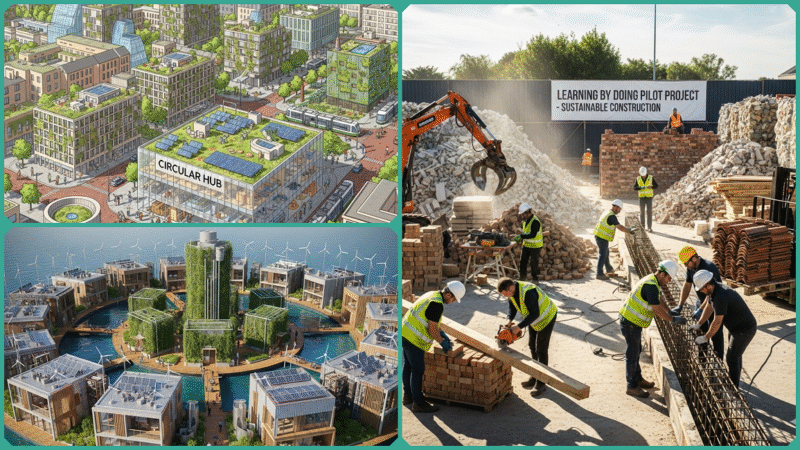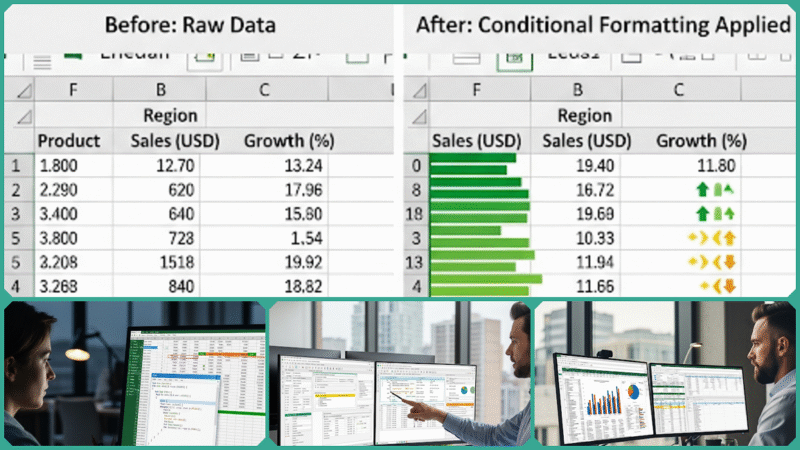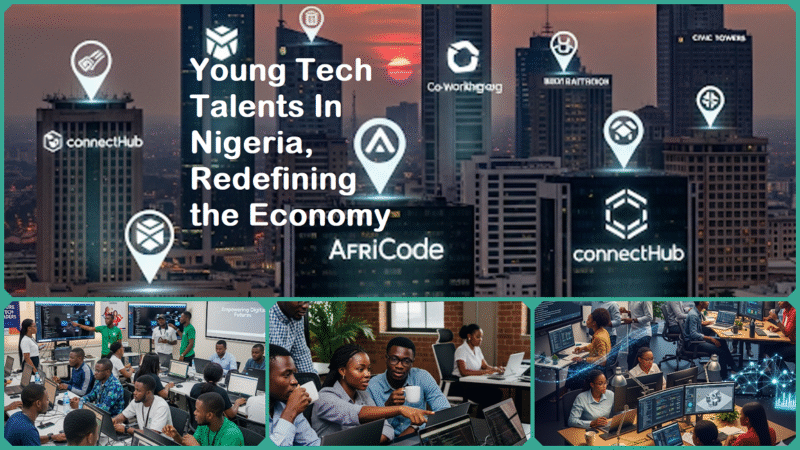Must Have IT Tech Skills for Geography and Planning Students
Estimated reading time: 17 minutes
For students pursuing studies in Geography and Regional Planning, developing and mastering the appropriate IT technical skills has become equally important as gaining a deep understanding of spatial theory and conducting environmental analysis. In today’s rapidly evolving industry, which is progressively adopting and integrating digital technologies, students who possess robust IT competencies and technical know-how significantly distinguish themselves and gain a competitive edge in the challenging job market.
This blog post delves deeply into the essential must-have IT tech skills that are specifically designed and tailored for geography and planning students. It aims to assist undergraduates, recent graduates, and those considering career changes by helping them effectively align their academic foundation with the rapidly evolving demands of technology-driven careers in these fields.

By concentrating on and developing these essential and critical skills, the post offers highly valuable and practical guidance that can help individuals effectively navigate and achieve success in today’s ever-evolving and competitive modern professional landscape.
Why IT Tech Skills Matter for Geography and Planning Students
IT Tech Skills hold immense importance for Geography and Planning students because they act as a crucial link connecting theoretical understanding with real-world practical applications in an increasingly technology-oriented environment. Within this field, digital tools such as
- Geographic Information Systems (GIS)
- Remote sensing technologies
- Advanced data visualization techniques
They are far from being mere additional skills and are essential components that enable efficient and accurate spatial analysis as well as informed urban planning decisions. These technological competencies empower students to transform abstract concepts into actionable insights, making them indispensable for modern professionals in geography and planning.
These skills enable professionals to efficiently process, analyze, and interpret large and complex datasets, simulate detailed urban environments, and effectively communicate their findings clearly and understandably to various stakeholders.
Consequently, employers place a high value on candidates who can seamlessly combine their in-depth geographical knowledge with advanced information technology competencies, as this powerful combination unlocks a wide range of diverse and promising career opportunities.
Graduates who possess these blended and interdisciplinary skills are particularly well-positioned for a variety of roles, including;
- Urban Planning
- Environmental Consultancy
- Geographic Information System (GIS) Analysis
- The innovative development and management of smart cities, among many other exciting fields
For students, integrating IT tech skills into their education effectively narrows the gap between academic theory and real-world practical application. It empowers them to innovate creatively and make well-informed, data-driven decisions while adapting swiftly to the rapid technological advancements constantly evolving in the field.
This solid practical foundation not only enhances their critical problem-solving capabilities but also significantly boosts their overall competitiveness in the increasingly demanding job market, ultimately leading to better career opportunities and long-term professional growth.
In Summary
IT tech skills are critical because they empower geography and planning students to transform complex spatial data into meaningful and actionable insights effectively. These skills also promote technological fluency, enabling students to navigate and utilize various advanced tools and software confidently.
Furthermore, embracing emerging trends in technology is essential as it shapes the future landscape of spatial sciences and urban development. This seamless integration of IT expertise with spatial knowledge is a fundamental key to unlocking a wide range of diverse and highly lucrative career pathways in today’s rapidly evolving and increasingly digital world.
Key IT Tech Skills for Geography and Planning Students
Key IT tech skills for Geography and Planning students are foundational to achieving success in today’s rapidly evolving fields of spatial analysis, urban development, and environmental management. These critical skills empower students to effectively manage and interpret complex geographic data sets, create compelling visualizations of spatial phenomena, and drive innovation across a broad range of applications in both the public and private sectors.
Below is a comprehensive and detailed overview of the essential IT tech skills that every Geography and Planning student should strive to develop:
Geographic Information Systems (GIS) and Remote Sensing
GIS skills serve as the fundamental cornerstone for students studying geography and urban planning, forming an essential part of their academic and professional development. Developing proficiency in specialized software tools such as ArcGIS, QGIS, or ERDAS Imagine empowers students to efficiently manage, analyze, and visualize complex spatial data.
This capability is critical for various practical applications, including urban planning, land use management, and comprehensive environmental monitoring. Additionally, remote sensing technologies provide valuable satellite or aerial imagery that significantly enhances the ability to monitor and track ongoing environmental changes as well as patterns of land development over time.
These advanced technical skills and analytical capabilities are highly sought after and deeply valued across a wide range of professional sectors, including government agencies, environmental consultancy firms, and organizations specializing in urban and regional planning.
Data Analysis and Statistical Software
Handling geographic data frequently demands advanced statistical expertise and a high level of proficiency in various analytical software platforms. Programming languages such as R and Python, especially when equipped with specialized libraries like Pandas and GeoPandas, provide powerful capabilities for conducting spatial statistics, performing predictive modeling, and enabling thorough data interrogation.
Additionally, software tools like Tableau and Power BI significantly improve the capacity to design clear, visually appealing, and compelling visualizations of complex datasets. These visualizations play a vital role in effectively communicating insights and findings to diverse stakeholders, ensuring that the information is accessible and actionable.
Programming and Scripting
Basic to intermediate programming skills in Python and JavaScript have become increasingly important and valuable in many fields. Python plays a crucial role in automating GIS workflows, efficiently manipulating large spatial datasets, and constructing complex analytical models that help derive meaningful insights.
On the other hand, JavaScript is widely used in popular web mapping libraries such as Leaflet and Mapbox, enabling developers to create highly interactive and user-friendly maps that are especially useful for enhancing public engagement and supporting urban planning projects.
Mastering these essential coding skills offers a robust and comprehensive foundation that not only drives innovation but also significantly enhances adaptability across a wide range of tech-driven roles within the fields of geography and closely related disciplines. This strong skill set empowers professionals to tackle complex challenges and contribute meaningfully to technological advancements in these areas.
Database Management
A solid understanding of relational database systems, particularly SQL, as well as NoSQL databases, is absolutely essential when it comes to effectively managing and organizing large-scale geospatial datasets. Specialized spatial database extensions such as PostGIS significantly enhance the capabilities of traditional databases by allowing them to efficiently store, process, and query geographic data.
These advanced tools enable complex spatial queries, which are crucial for improving the accuracy and integrity of data used in various research and urban planning projects. Developing these skills not only supports the systematic organization of data but also ensures that datasets remain accessible, reliable, and well-maintained throughout the duration of a project.
Digital Cartography and Visualization
Creating effective and clear maps along with visual representations of data is critical in the field of geography. Developing strong skills in design software programs such as Adobe Illustrator or Inkscape, when combined with a solid and thorough grounding in essential cartographic principles, greatly enhances the ability to communicate complex spatial information in a visually compelling manner.
Mastery of advanced digital visualization techniques empowers students to produce highly persuasive presentations and detailed reports tailored for a wide range of diverse audiences across different contexts and disciplines.
Basic Web Development and Cloud Computing
Gaining a solid understanding of foundational web technologies such as HTML, CSS, and various web APIs empowers students to effectively design, develop, and share interactive online mapping applications with ease.
Developing familiarity with major cloud platforms, including AWS and Google Cloud, is essential as these platforms provide powerful tools for scalable spatial data processing, storage, and collaborative work environments.
Additionally, cloud GIS services like ArcGIS Online play a crucial role by enabling seamless cloud-based spatial analysis and effortless project sharing, making these technologies increasingly recognized as essential industry standards in the field.
Use of Digital Communication and Project Management Tools
Proficiency in collaborative and productivity tools such as Microsoft Office, Google Workspace, Trello, and Slack plays a crucial role in supporting teamwork and facilitating effective project management. Mastering these widely used software platforms enables smoother communication, better organization, and seamless coordination among team members working on complex projects.
These essential “soft” IT tech skills significantly enhance communication efficiency, foster collaboration within multidisciplinary teams, and contribute to maintaining a high level of overall workplace professionalism. All of these qualities are absolutely indispensable and highly valued in contemporary careers related to geography and urban planning, where teamwork and project coordination are fundamental to success.
These IT technology skills collectively empower students in geography and planning by enabling them to effectively bridge theoretical knowledge with practical, technology-driven applications. This integration not only fosters innovation but also significantly enhances their employability prospects in an increasingly dynamic and rapidly evolving job market where technological proficiency is highly valued.
Current Trends and Developments in Tech for Geography and Planning
Current trends and developments in technology for geography and planning students are centered around a variety of innovative and advanced areas that are significantly transforming the fields of spatial sciences and urban planning.
These emerging technologies are reshaping how data is collected, analyzed, and applied to solve complex geographical and urban challenges, offering new tools and methodologies that enhance understanding and decision-making processes in these disciplines.
Artificial Intelligence and Machine Learning (AI/ML)
AI-driven spatial analysis and predictive modeling represent groundbreaking and transformative advances in technology. These innovative tools enable significantly more accurate and detailed environmental risk assessments as well as sophisticated urban simulations.
By extracting complex patterns and meaningful insights from vast and diverse spatial datasets, these technologies empower planners and decision-makers with the ability to generate reliable forecasts. This enhanced predictive capability supports informed, data-driven decisions that improve the effectiveness and sustainability of urban planning and environmental management initiatives.
Big Data and Internet of Things (IoT) Integration
The integration of Big Data analytics with IoT is central to smarter city planning and environmental monitoring. IoT sensors deployed throughout urban environments collect real-time data on traffic flows, energy consumption, air quality, and waste management.
Big Data analytics processes this vast amount of information to optimize city operations such as traffic control, energy distribution, and public services, making cities more efficient, sustainable, and livable. For example, smart traffic lights can dynamically adjust according to congestion detected by IoT sensors, reducing delays and emissions.
Similarly, smart grids balance energy supply and demand using real-time data from IoT devices. These technologies also contribute to environmental monitoring by identifying pollution hotspots and enabling rapid responses to public health risks. However, challenges such as technological infrastructure, privacy, security, and data governance must be addressed to fully harness these benefits.
Mobile GIS and Crowdsourcing
Mobile GIS applications integrated with GPS-enabled smartphones enable a much broader and more diverse range of data collection through the process of crowdsourcing. This significantly enhances the immediacy, accuracy, and richness of geographic data by actively engaging the general public in the process of data gathering.
Such public involvement is crucial and invaluable for applications that require real-time information, such as urban planning initiatives and disaster response efforts, where timely and detailed geographic information can make a substantial difference in outcomes.
Enhanced Remote Sensing
High-resolution satellite imagery combined with advanced drone technology offers highly detailed spatial data that significantly enhances the ability to conduct finer-scale analyses of various environmental changes and urban development patterns.
These cutting-edge and innovative data sources empower researchers and urban planners to conduct rapid and thorough assessments with significantly increased efficiency. They also play a crucial role in enhancing the accuracy and reliability of monitoring constantly changing and dynamic conditions over extended periods of time.
Sustainable and Smart City Technologies
Tech-savvy urban planners increasingly leverage advanced sensor networks, sophisticated automated traffic controls, and highly energy-efficient systems to design and develop resilient, sustainable urban environments that can adapt to changing conditions.
These smart city technologies primarily focus on significantly reducing waste, conserving valuable natural resources, and substantially improving the overall quality of life for residents by effectively utilizing real-time data and intelligent automation processes.
In Summary
Adapting to these rapid and ongoing developments requires geography and planning students to engage in continuous learning and develop strong digital fluency. Gaining proficiency in,
- Advanced AI and machine learning (ML) tools
- Big Data analytics
- Internet of Things (IoT) technologies
- Mobile Geographic Information Systems (GIS)
It will be essential for those aiming to thrive and excel in future careers within the spatial science and urban planning fields. These critical skills empower professionals to effectively transform vast amounts of spatial data into meaningful, actionable insights and to create innovative, practical solutions that address complex and evolving urban challenges in a dynamic environment.
Real-World Examples and Career Applications
Here are several detailed real-world examples and practical career applications that highlight the significant impact of IT tech skills, particularly focusing on GIS and Python scripting, for students and professionals working in the fields of geography and urban planning:
Recent Graduate Using Python Scripting for Urban Development
A recent graduate specializing in GIS applied Python scripting to automate spatial data cleaning and processing for an urban development project. This automation significantly reduced the time required for data preparation while improving the accuracy of spatial analyses. For instance, widely used Python libraries such as Pandas, GeoPandas, and ArcPy provide powerful and efficient tools for managing and processing large geographic datasets.
These libraries significantly streamline data manipulation tasks, allowing urban planners to analyze complex spatial information more quickly and effectively. As a result, they enable faster and more informed decision-making throughout various stages of urban planning workflows, ultimately improving project outcomes and resource management.
Such automation streamlines repetitive tasks, allowing planners to focus on higher-level analysis and problem-solving. This experience enhances employability by demonstrating practical skills relevant to urban analytics and GIS-based planning projects.
Mid-Career Planner Transitioning into Smart City Consulting
A mid-career planner enhanced their expertise by mastering cloud GIS platforms such as ArcGIS Online and integrating IoT data streams for smart city applications. This combination enabled them to develop innovative urban mobility solutions, including real-time traffic management and sensor-based infrastructure monitoring.
Cloud GIS facilitates scalable spatial data processing and collaborative work environments, while IoT integration provides dynamic data for urban system optimization. Such skills are increasingly sought after in consultancy roles focused on smart infrastructure, sustainable urban development, and IoT-enabled planning.
Academic Programs Enhancing Hands-On Experience with Interactive Digital Mapping
Universities and academic programs have incorporated interactive digital mapping tools like QGIS and ArcGIS Online into their curricula. Through practical assignments involving web mapping, cloud GIS, and spatial data visualization, students gain real-world experience.
This hands-on training improves graduates’ readiness for GIS analyst roles, urban planners, and spatial data scientists by equipping them with skills in mapping, spatial analysis, and tech fluency. Alumni from these programs often find increased employability due to their proficiency in both theoretical concepts and applied technologies.
Summary of Career Applications
- The automation of spatial data tasks using Python significantly enhances both the efficiency and accuracy of urban development projects. By leveraging Python’s powerful libraries and scripting capabilities, urban planners and GIS professionals can streamline complex workflows, reduce manual errors, and process large datasets much faster. This leads to more reliable results and allows teams to focus on higher-level analysis and decision-making, ultimately improving the overall quality and effectiveness of urban planning initiatives.
- Cloud GIS and IoT integration skills provide planners with advanced capabilities to design and implement innovative smart city solutions. These combined technologies enable the development of more efficient, data-driven urban management systems that improve quality of life and promote sustainable growth.
- Academic exposure to interactive and cloud-based GIS tools significantly enhances graduate job readiness by providing students with practical, hands-on experience in cutting-edge technologies. This familiarity not only boosts their technical skills but also prepares them to meet the evolving demands of the job market more effectively.
These examples highlight how the strategic combination of traditional geographic knowledge with modern IT technological skills—such as scripting, cloud computing, and data integration—can significantly contribute to creating impactful and highly innovative careers in the fields of urban planning and geography.
By leveraging both foundational geographic principles and advanced technological tools, professionals can drive meaningful change and develop cutting-edge solutions that address complex urban and spatial challenges effectively.
FAQs
What is the most important IT skill for geography students?
The most important IT skill for geography students is proficiency in Geographic Information Systems (GIS) software. GIS tools like ArcGIS or QGIS are fundamental for spatial data analysis, mapping, and visualization—core tasks in geography and planning professions. Mastering GIS enables you to manage complex geographic datasets and present spatial information effectively to support decision-making.
Do I need programming skills to work in geography and planning?
While not always mandatory, having basic programming skills, especially in Python, is highly advantageous. Programming helps automate repetitive tasks, manipulate large datasets, and build custom spatial models. It increases your efficiency and versatility, particularly when working with GIS data or conducting advanced spatial analyses.
Can geography students work in tech sectors?
Geography students with strong IT skills can find opportunities in technology-driven industries such as GIS consulting, environmental data science, urban analytics, and smart city development. Your geographic knowledge combined with IT skills gives you a competitive edge in tech roles focused on spatial data, geospatial software development, and digital urban planning solutions.
How do I balance learning IT skills with core geography subjects?
Balancing IT skills learning with geography coursework is achievable by integrating technical training into your studies. This can be done through GIS labs, elective courses focusing on programming and data analysis, or engaging with online tutorials and workshops. Prioritize practical, hands-on experiences that complement theoretical knowledge to reinforce both areas effectively.
Are digital soft skills important in geography careers?
Digital soft skills like project management, digital communication, and teamwork are essential for successful collaboration in multidisciplinary environments. Proficiency in tools like Microsoft Office, Google Workspace, Trello, or Slack helps streamline workflows and enhances your professionalism, making you a valued team member in any geography or planning role.
In Conclusion
Geography and planning students have a unique opportunity to significantly improve their career prospects and drive innovation within their respective fields by developing and mastering essential IT skills. These skills not only increase employability but also enable students to contribute to cutting-edge projects and solutions.
Below are several actionable and practical recommendations designed to help students acquire and sharpen these vital skills effectively and efficiently:
- Enroll in GIS Certification Courses or Workshops: Structured certificate programs, such as those offered by universities or professional bodies, provide focused, hands-on training in GIS fundamentals, spatial analysis, remote sensing, and geospatial technologies. These programs typically take less than a year and cover both theoretical and practical aspects, preparing students for real-world applications. Examples include university GIS certificate programs and professional certifications like the GIS Professional (GISP) certification.
- Explore Online Learning Platforms: Platforms like Coursera, Esri Academy, and Udemy offer specialized courses on GIS, programming (especially Python), data analysis, and remote sensing, tailored to the needs of geography students. These courses provide flexibility to learn at your own pace while gaining skills such as spatial data manipulation, cartography, web mapping, and advanced geoprocessing.
- Engage with Professional Bodies: Joining organizations such as the Royal Geographical Society or the Urban and Regional Information Systems Association (URISA) keeps you connected to the latest industry trends and networking opportunities. These bodies often provide access to workshops, conferences, publications, and certification pathways that enhance both knowledge and professional credibility.
- Practice Building Interactive Maps and Digital Projects: Practical experience is invaluable. Use open-source tools like QGIS and cloud-based platforms such as ArcGIS Online to build interactive maps and spatial analytics projects. Showcasing these projects in your portfolio demonstrates your applied skills to employers and helps build confidence.
By carefully following these detailed steps and dedicating time to mastering essential IT technical skills such as Geographic Information Systems (GIS), programming languages, advanced data analysis, and digital cartography techniques, students specializing in geography and urban planning can significantly enhance their overall employability.
These skills empower them to drive innovation in various fields, including urban development and environmental planning. Furthermore, acquiring this expertise allows them to confidently explore and navigate a wide range of dynamic and evolving career paths, not only within traditional roles but also in rapidly growing technology-driven sectors.






